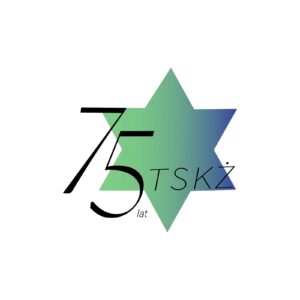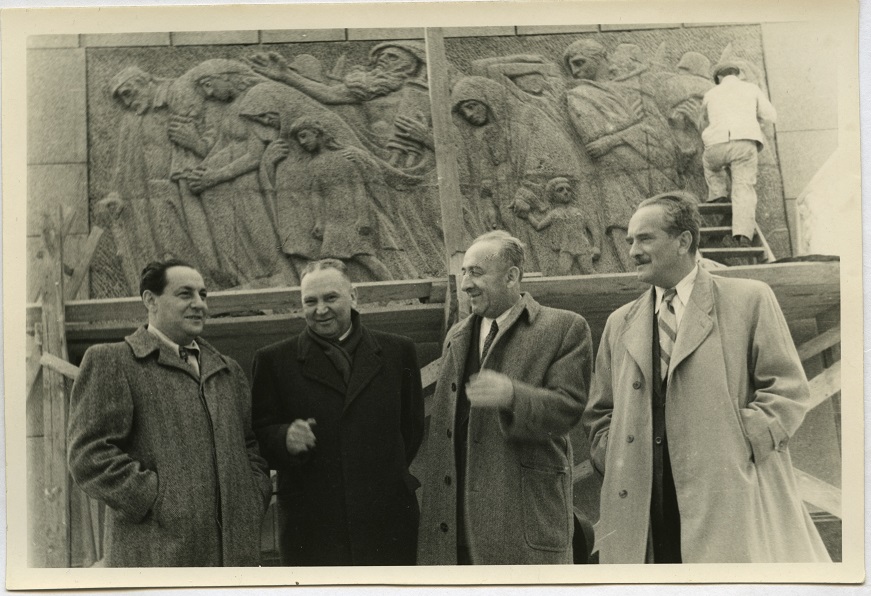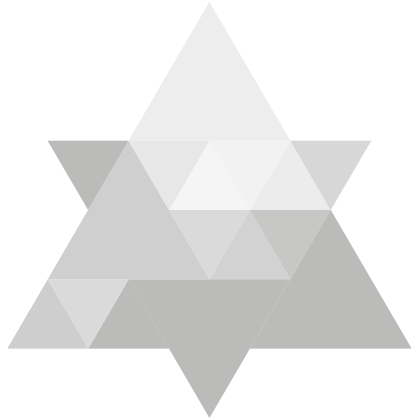And there will be in Warsaw […] a fragment of the ghetto left, preserved and maintained in its original shape, just as we found it, in all its grim solemnity of ruins and destruction. […] We will bring children to this place and tell them about the most horrific martyrdom of people in the history of the world – wrote Julian Tuwim in his manifesto “We, the Jews of Poland”. The Warsaw Monument to the Ghetto Heroes has become such a ‘fragment of the ghetto left in its original shape’ and to this day remains the site of the main celebrations commemorating the anniversary of the Ghetto Uprising.
Monuments commemorating the participants of the Warsaw Ghetto Uprising started to emerge shortly after the ending of World War II. Their construction was the result of numerous initiatives by the Jewish community, international organisations, and private individuals who sought to preserve the memory of the tragic fates and heroism of Jews during the Holocaust. A similar stance was adopted by the Central Jewish Committee in Poland [CKŻP], whose leadership made the decision to build a monument on the site of the former Warsaw ghetto as early as 1945.
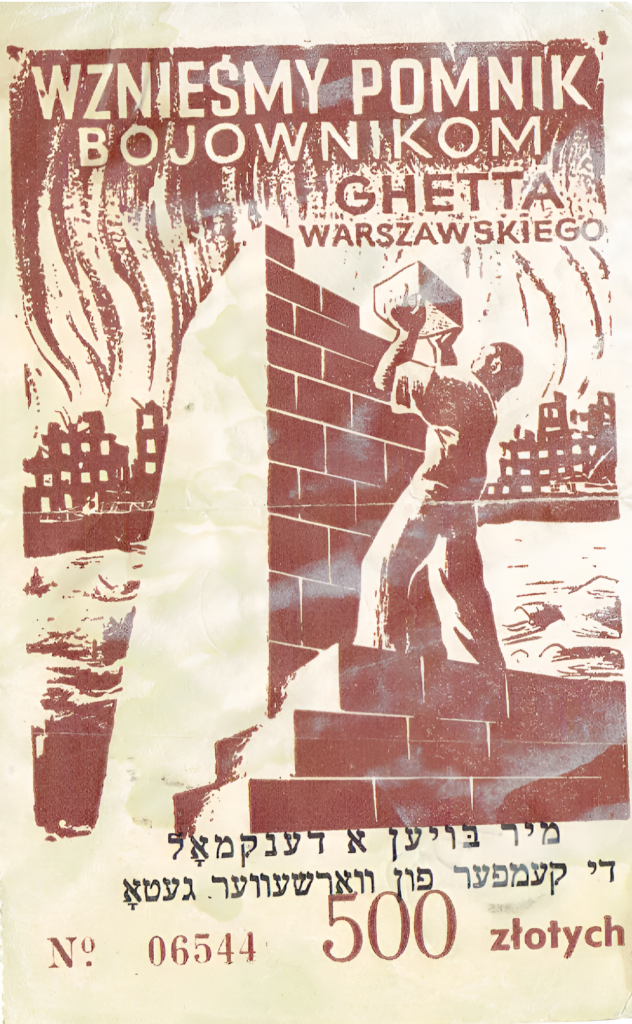
On 16 April 1946, which was three days before the 3rd anniversary of the Uprising, the first memorial stone was unveiled. The design was developed by architect Leon Marek Suzin from the Capital City Reconstruction Bureau. The monument, created on CKŻP’s initiative, was made of red sandstone, whose colour was to symbolise the blood which was shed in combat. The first commemorative plaque was meant to resemble the underground manholes used during the uprising.
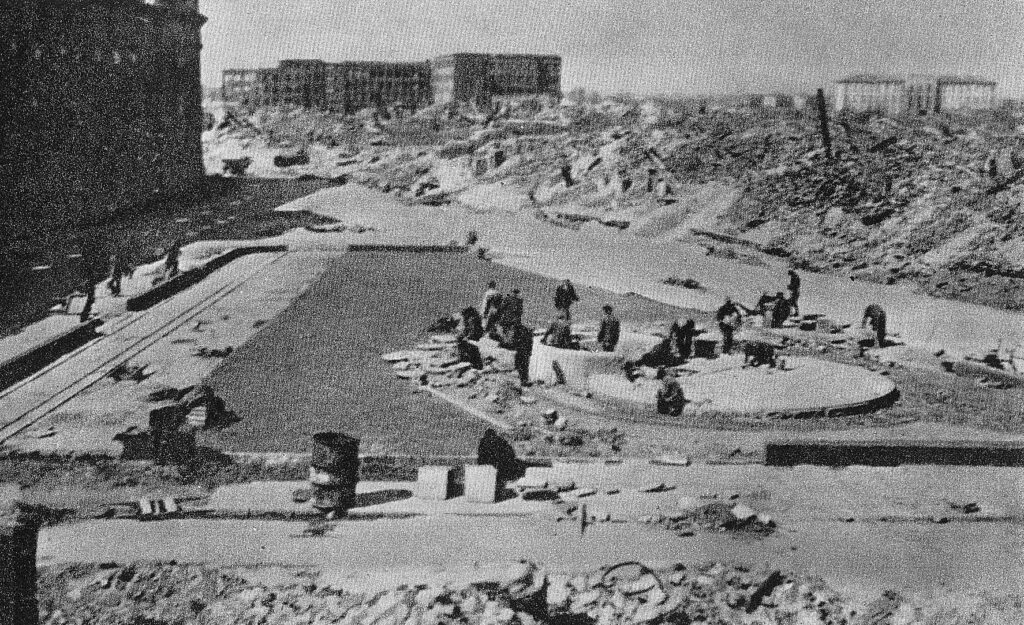
Still in 1946, a decision was made to build a second, considerably larger monument, which was to be erected on the site of the first clashes between the Insurgents and the Germans in April 1943. Apart from exercising a formal supervision over the project, CKŻP also gathered all the necessary funds. The funds for the construction came from both Polish Jews and international Jewish organisations. The Committee organised fundraisers and cooperated with the communist authorities in order to obtain all the necessary permits.
CKŻP commissioned a sculptor Natan Rapaport, who was a graduate of the Warsaw Academy of Fine Arts, to work on the memorial. After Germany’s invasion of Poland in 1939, Rapaport fled to the Soviet Union. The artist returned to his homeland in mid-1946 and just six months afterwards he won the competition for the design of the monument. Rapaport’s vision was full of symbolism, and the final effect of his work was supposed to emphasise both heroism of the Insurgents, and tragedy of the victims of the Holocaust.

The architectural design of the monument was commissioned to Leon Suzin, who had created the first memorial stone. The form chosen by Rapaport was intended to refer not only to the walls of the ghetto, but also to the Wailing Wall in Jerusalem. The monument consists of two bas-reliefs: the first one depicts a group of Jewish fighters, and the second one shows Jews being led to death. I set myself two related goals: to present the Jewish martyrdom under Nazi occupation in a dignified manner, and in particular the Jewish heroism of the Ghetto Insurgents […] – admitted Rapaport – I saw Jewish martyrdom during the occupation not as an isolated episode in history, but as a link in the chain of Jewish suffering that has been dragging on for two millennia […].
The artist was pressured to speed up the project because the authorities at the time agreed to unveil the monument only on one condition: it had to be ready for the 5th anniversary of the Uprising. One of the materials used to construct the monument was Swedish labradorite, which the Third Reich had previously intended to use to erect a Victory Monument dedicated to Hitler. The fact that the same rock was used to commemorate Jewish resistance gave the project even greater significance.

Even though the first ceremony commemorating the outbreak of the Uprising took place in Poland in 1945, no event has been as grandiose as the one which was accompanied by the unveiling of the Monument. Crowds gathered at the square on Zamenhofa Street 19, where a tenement house housing the Judenrat headquarters during the occupation was located. Among the tens of thousands of people there were Holocaust survivors, representatives of state authorities and foreign delegates. The leaders of the ghetto uprising, Marek Edelman and Antek Cukierman, were also present. During the ceremony, a sermon was delivered by the Chief Rabbi of the Polish Army, Colonel Dawid Kahane, who emphasised the heroism of the Jewish insurgents and the significance of their struggle as a symbol of resistance against fascism.
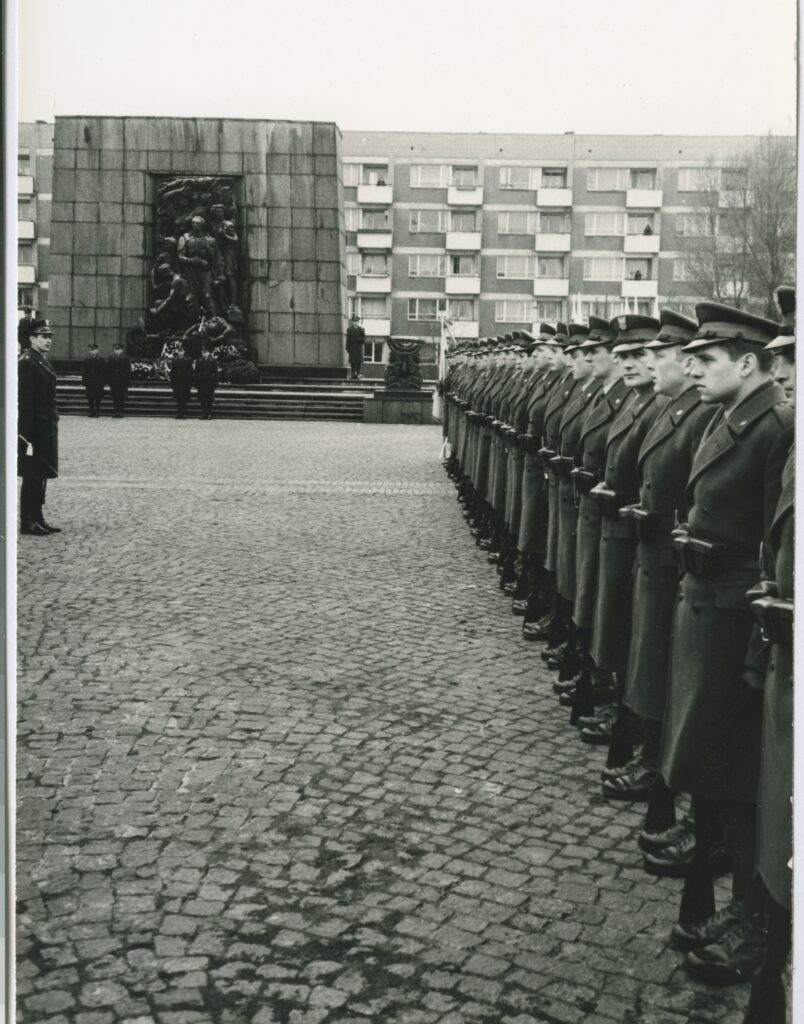
The Monument to the Ghetto Heroes quickly became one of the most prominent memorial sites in Warsaw and the focal point of anniversary celebrations organised by the Central Committee of Jews in Poland, and later by the Social and Cultural Association of Jews in Poland. It was in this very spot in 1970 that Willy Brandt, Chancellor of the Federal Republic of Germany, went down on his knees in a gesture of repentance, which passed into history as a symbol of Germany’s acknowledgement of its blame for the Holocaust. Photos of this scene quickly spread around the world. In Poland, the photograph was published only by Fołks sztyme – it was banned by censors in Życie Warszawy daily. Today, the monument is part of a larger memorial area. The POLIN Museum of the History of Polish Jews was established in its vicinity.

In our next article, which will be posted in a month, we will introduce a unique publishing project i.e. Jidysz Buch.
By Marta Rydz
